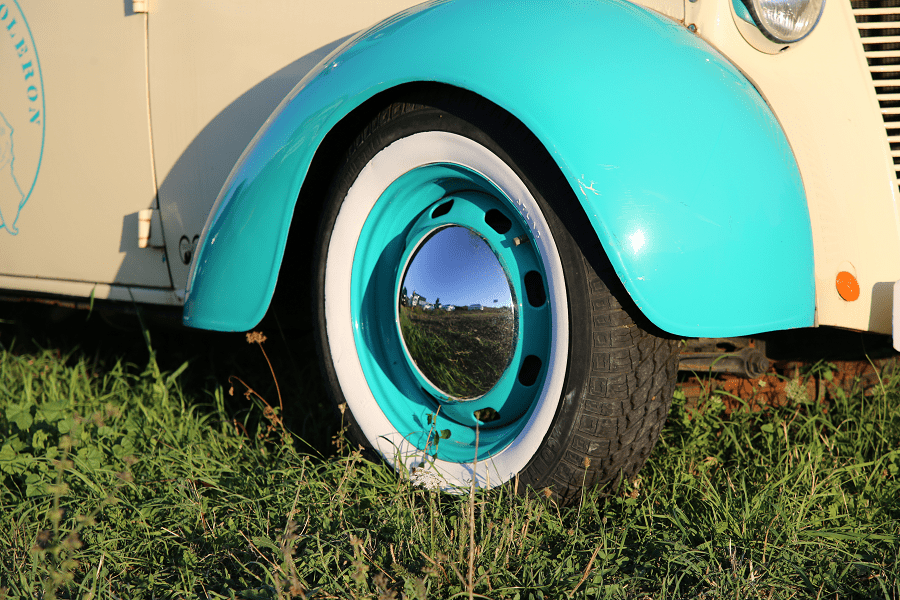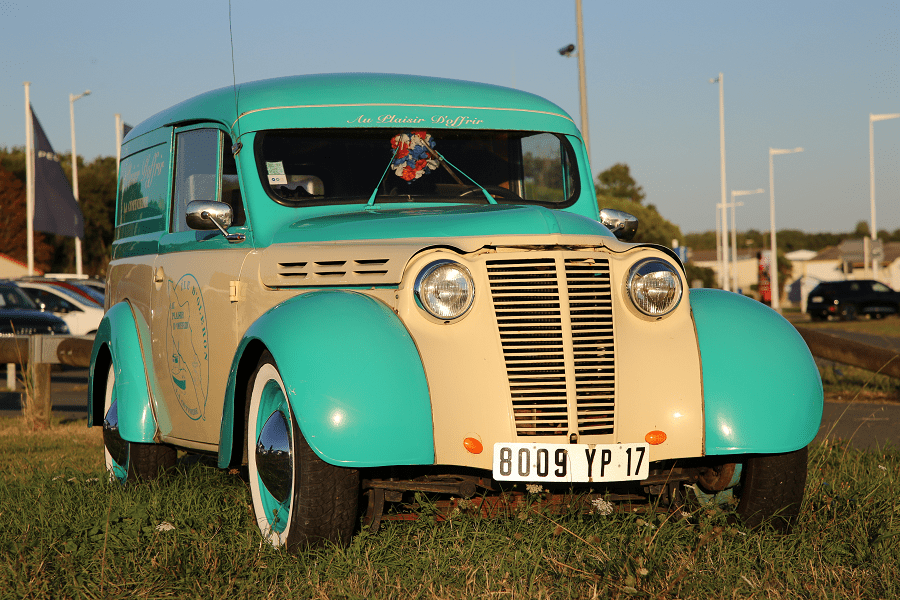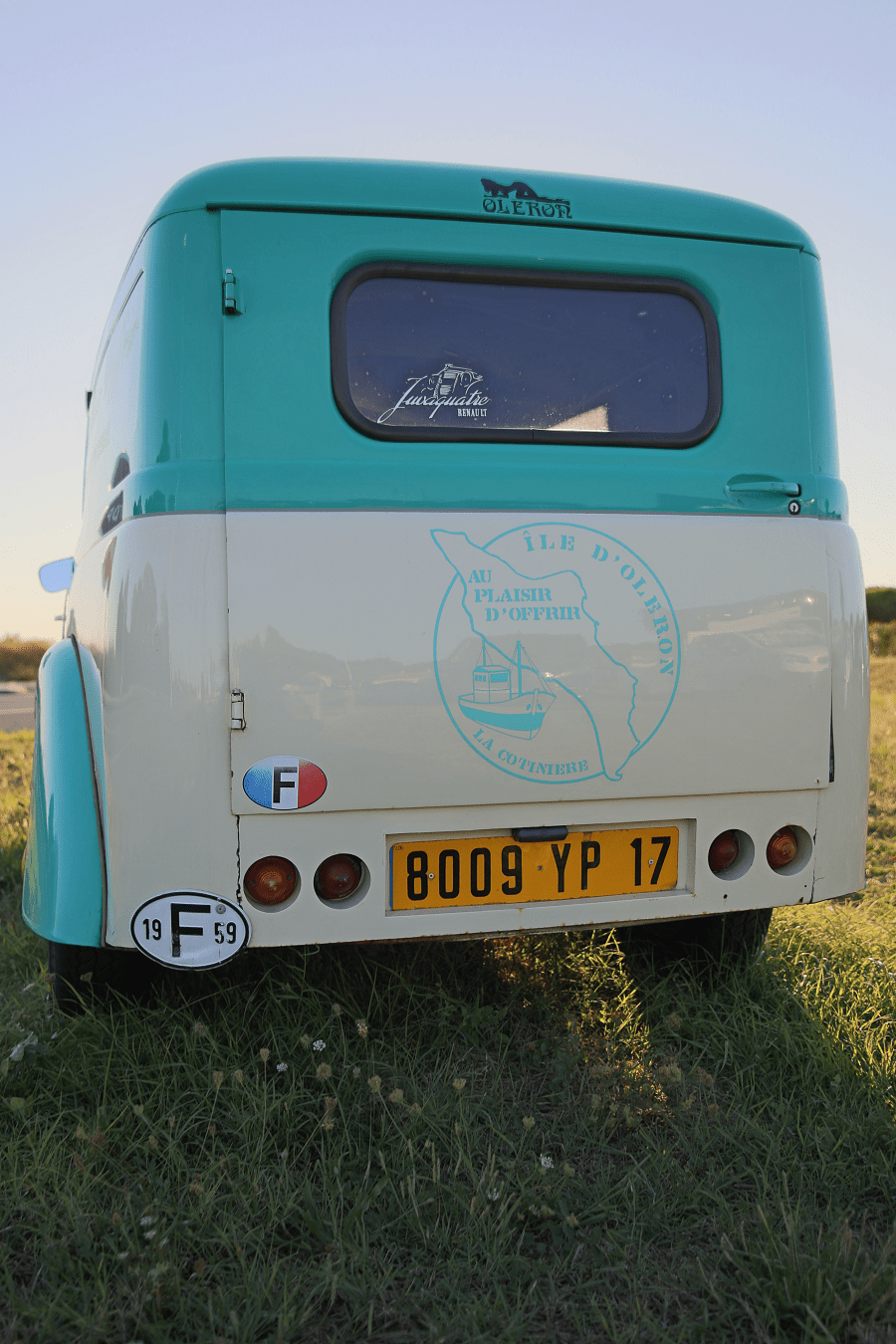The Renault Juvaquatre is a small family car / compact car automobile produced by the French manufacturer Renault between 1937 and 1960, although production stopped or slowed to a trickle during the war years. The Juvaquatre was produced as a sedan/saloon until 1948 when the plant switched its full attention to the new Renault 4CV. During the second half of 1952 the plant restarted production of the Juvaquatre sedans/saloons for a period of approximately five months.
In 1950 a van based station wagon body joined the range; later models of the station wagon (from 1956 on) were known as the Renault Dauphinoise. The sedan/saloon found itself overshadowed and was soon withdrawn from production after the appearance in 1946 of the Renault 4CV (which was France’s top selling car in the post-war years). However, there was no estate version of the rear engined 4CV or Dauphine, and the Juvaquatre “Dauphinoise” station wagon remained in production until replaced by the Renault 4 in 1960.
The Juvaquatre was originally conceived in 1936 by Louis Renault as a small, affordable car designed to occupy the 6CV car tax class and to fit in the Renault range below existing more upmarket models such as the Primaquatre and Celtaquatre. The company was focused on creating new customers who would not otherwise buy Renaults, and on appealing to the new class of lower-income consumer created by changing labor conditions and the rise of the Popular Front in France in the 1930s (which ironically had adversely affected Renault considerably). The Juvaquatre was heavily inspired by the German Opel Olympia, a car by which the patron had been impressed during a 1935 visit to Berlin. Consequently, the Juvaquatre, particularly early models, bore a strong resemblance to the Olympia.
The four-cylinder water-cooled engine with which the Juvaquatre was launched in 1937 (and which continued to power the car till the mid 1950s) shared the 95 mm cylinder stroke of the broadly similar engine that had powered the Renault Celtaquatre since 1934.
On the Juvaquatre the cylinder bore (diameter was reduced to 58 mm, however, giving rise to an overall engine capacity of just 1003cc. The engine was a side-valve unit, and at launch a maximum power output of 23 hp (17 kW) was listed.
Significantly, market dynamics dictated that Renault’s Juvaquatre was destined to spend more than ten years competing head to head with the Peugeot 202 which from the start came with a more efficient OHV power unit (and more power).














